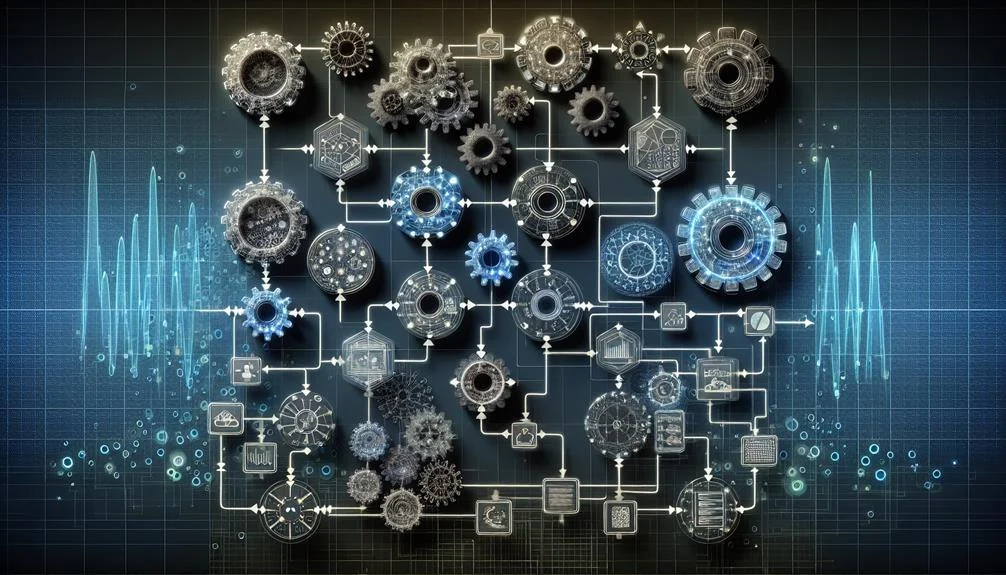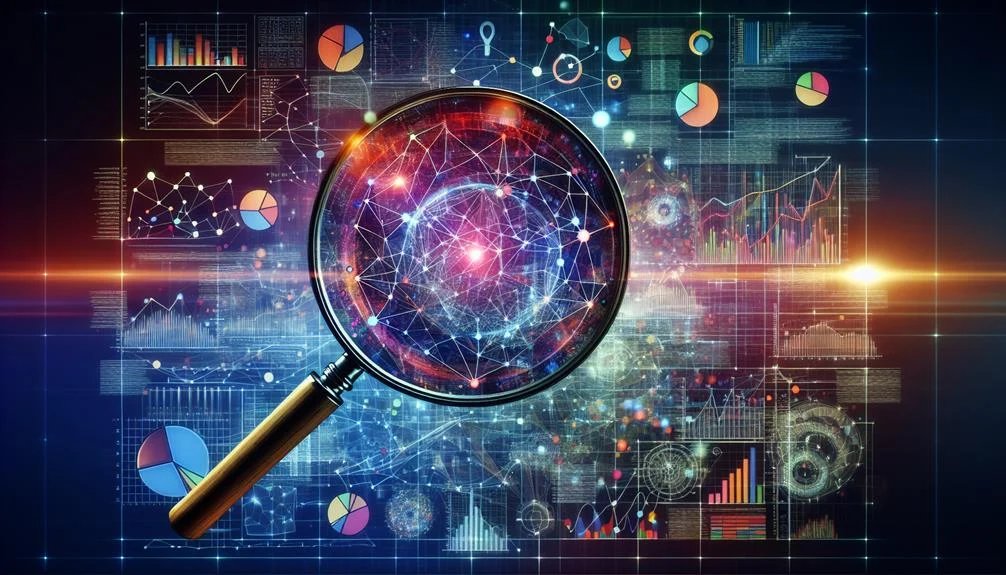In today’s data-driven landscape, the terms ‘Data Science‘ and ‘Data Analytics‘ are often used interchangeably, leading to confusion regarding their distinctions. Understanding the nuances between these two fields is essential for organizations aiming to leverage their data effectively. While both involve the analysis of data, the methodologies, tools, and objectives distinctively set them apart. To comprehend the subtle yet significant disparities between Data Science and Data Analytics, it is imperative to recognize the core principles and practical applications that define each discipline.
Key Takeaways
- Data Science focuses on predictive modeling and advanced algorithms using statistical and computational methods.
- Data Analytics analyzes past data for business decisions, using tools like Excel and Tableau.
- Data Science involves data engineering, machine learning, and extracting insights from vast datasets.
- Data Analytics focuses on structured data analysis for business intelligence and trend identification.
- Data Science requires expertise in data processing, machine learning algorithms, and statistical analysis.
Overview of Data Science and Data Analytics
What distinguishes Data Science from Data Analytics in their fundamental approaches to data processing and analysis?
Data Science involves the utilization of statistical and computational methods to build predictive models. It encompasses various disciplines such as data engineering, machine learning, and predictive modeling. Data scientists leverage programming languages like Python, statistical tools like R, and frameworks like TensorFlow to extract insights from vast datasets.
On the other hand, Data Analytics focuses on analyzing historical data to derive insights that can guide business decisions. Data analysts primarily work with tools such as Excel, Tableau, and Power BI to examine datasets and identify trends.
While Data Science emphasizes predictive modeling and the utilization of advanced algorithms, Data Analytics is more centered on examining existing data to understand past trends and patterns for strategic decision-making.
Both disciplines require specific skills and expertise in data processing, but they differ in their primary objectives and methodologies.
Key Concepts in Data Science

Data Science is grounded in the application of statistical and computational methods to construct predictive models and extract actionable insights from extensive datasets. Data scientists leverage tools like Python, R, and TensorFlow to perform statistical analysis, data mining, and machine learning tasks.
The goal of data science is to deliver valuable predictions, forecasts, segmentation, fraud detection, and automated decision-making processes based on data-driven findings. Data science encompasses various stages, including defining objectives, collecting and integrating data, developing models, and exploring data patterns for insights.
In this field, data scientists play an essential role in transforming raw data into meaningful information that organizations can use to make informed decisions. They are skilled in handling large and complex datasets, applying advanced algorithms, and interpreting results to drive strategic business actions.
Key Concepts in Data Analytics

When delving into the world of data analytics, the primary focus lies in examining past data to uncover valuable trends and patterns. Data analytics primarily deals with structured data, which is organized and easily searchable, to extract meaningful insights for business intelligence. Tools like SQL, Excel, Tableau, and Power BI are commonly used in data analysis to transform raw data into actionable recommendations. The ultimate goal of data analytics is to provide prescriptive analytics that guide decision-making processes based on historical data trends. By working with defined data sets, data analysts can answer specific business questions and optimize operational processes effectively.
| Key Concepts in Data Analytics | |||
|---|---|---|---|
| Data Analysis | Structured Data | Tools Needed | Business Intelligence |
| Unstructured Data | Insights from Data | Skills Include | Identify Trends |
Skills Required in Data Science

In the field of data science, proficiency in programming languages such as Python, R, and SQL is fundamental for manipulating and analyzing data effectively. Data scientists and data analysts require a diverse skill set to excel in this field, encompassing a range of technical and analytical competencies.
Key skills required in data science include:
- Statistical Analysis Skills: Data scientists need to possess a strong foundation in statistics to interpret complex datasets accurately and construct reliable predictive models.
- Machine Learning Algorithms: Proficiency in machine learning algorithms and techniques is essential for developing robust predictive models that can uncover patterns and insights within data.
- Mathematical Background: A solid mathematical background is essential for data scientists to understand and apply advanced statistical concepts effectively in their analysis.
- Big Data Technologies: Data scientists often work with big data technologies like Hadoop to manage and analyze vast datasets efficiently, enabling them to extract valuable insights and make data-driven decisions.
Skills Required in Data Analytics

Proficiency in data mining, statistical analysis, and data visualization tools like Tableau is imperative for success in data analytics. Data analysts need strong skills in SQL, R, SAS, and database management to interpret and analyze data sets effectively.
Moreover, excelling in data cleaning, processing, and preparing reports to communicate trends and patterns is essential for data analysts. A solid background in mathematics, statistics, and experience in database analysis are key prerequisites for thriving in the field of data analytics.
Pursuing advanced degrees and gaining experience in mathematical fields can greatly benefit professionals seeking to shift into data analytics roles. By mastering these skills, data analysts can efficiently extract insights from data, provide valuable recommendations, and contribute to informed decision-making processes within organizations.
The combination of technical expertise and analytical capabilities distinguishes data analysts from data scientists, highlighting the specialized skill set required for success in data analytics.
Applications of Data Science

Utilizing predictive modeling and cutting-edge tools, data science is employed to identify patterns and generate future forecasts in various industries. Data science leverages machine learning and statistical methods to extract valuable insights from data and drive decision-making processes.
Some key applications of data science include:
- Fraud Detection: Data science plays an essential role in detecting fraudulent activities by analyzing patterns and anomalies in large datasets, helping organizations prevent financial losses.
- Personalized Recommendations: By utilizing data processing techniques, data science enables businesses to offer personalized recommendations to customers based on their preferences and behavior, enhancing user experience and increasing engagement.
- Segmentation: Data science aids in segmenting customers based on various characteristics, allowing companies to tailor their marketing strategies and product offerings to different target groups effectively.
- Automated Decision-Making: Through advanced algorithms, data science enables automated decision-making processes, streamlining operations and improving efficiency across industries.
Applications of Data Analytics

Applications of data analytics encompass a wide array of uses, including deriving real-world data insights, providing vital support for business decision-making processes, and employing predictive modeling techniques to forecast future trends.
By leveraging historical data, businesses can gain a competitive edge by making informed decisions and optimizing strategies based on data-driven insights.
These applications highlight the significance of data analytics in driving operational efficiency and fostering growth within organizations.
Real-World Data Insights
Data analytics plays a pivotal role in various industries, providing real-world data insights that drive strategic decision-making and operational efficiency. This analytical approach to data is essential in the business world as organizations leverage data analytics to gain a competitive edge.
Some key applications of data analytics include:
- Customer Behavior Analysis: Companies like Amazon utilize data analytics to analyze customer behavior patterns and offer personalized product recommendations, enhancing customer experience and increasing sales.
- Fraud Detection in Finance: Financial institutions, such as banks, rely on data analytics to detect fraudulent transactions swiftly, safeguarding customers’ accounts and maintaining trust in the financial system.
- Healthcare Data Analysis: In the healthcare sector, data analytics is vital for analyzing patient data, improving treatment outcomes, and enhancing overall quality of care.
- Retail Optimization: Retail companies apply data analytics to optimize inventory management, predict consumer trends, and streamline operations for better efficiency and profitability.
These real-world data insights demonstrate the broad applicability and significance of data analytics in driving informed decision-making across various industries.
Business Decision Support
Analyzing historical data to extract trends and patterns plays a pivotal role in supporting strategic business decision-making processes. By utilizing data analytics, organizations can explore past data to identify trends, patterns, and insights that are essential for making informed strategic decisions.
This process enables businesses to understand their performance, customer behavior, and market trends more thoroughly. Through the insights gained from data analytics, organizations can optimize processes, enhance efficiency, and ultimately drive growth.
Business decision support through data analytics tools such as Tableau, Power BI, and Excel empowers organizations to transform raw data into actionable insights. These tools facilitate the visualization of data, making it easier for decision-makers to interpret complex information and derive meaningful conclusions.
Predictive Modeling Techniques
Utilizing predictive modeling techniques in data analytics allows organizations to forecast future trends and outcomes based on historical data patterns, enabling informed decision-making and strategic planning. Machine learning algorithms play an essential role in predictive modeling, facilitating accurate predictions that benefit businesses in various ways.
Here are some key predictive modeling techniques used in data analytics:
- Regression Analysis: This method helps in understanding the relationship between variables and predicting continuous outcomes.
- Decision Trees: Decision trees are used to create a model that predicts the value of a target variable by learning simple decision rules inferred from the data features.
- Time Series Forecasting: Time series forecasting involves predicting future values based on past data points ordered chronologically.
- Historical Data Patterns: Analyzing historical data patterns aids in identifying trends and patterns to make informed decisions about the future.
Conclusion
In the vast landscape of data analysis, Data Science is the adventurous explorer, exploring uncharted territories with predictive modeling and advanced algorithms. Meanwhile, Data Analytics serves as the wise historian, uncovering valuable insights from past data to guide strategic decision-making.
Both disciplines play integral roles in the domain of data-driven decision-making, each offering unique perspectives and tools to reveal the hidden treasures within datasets.





